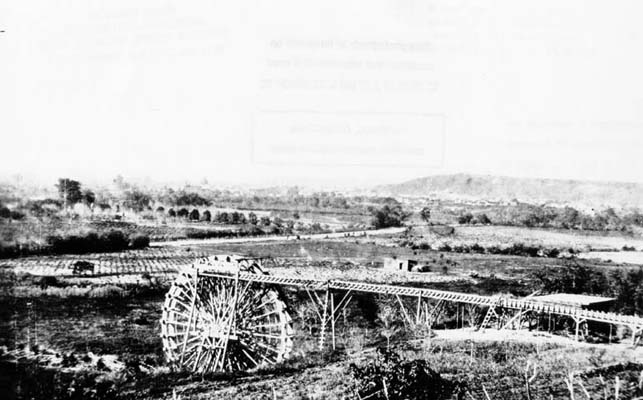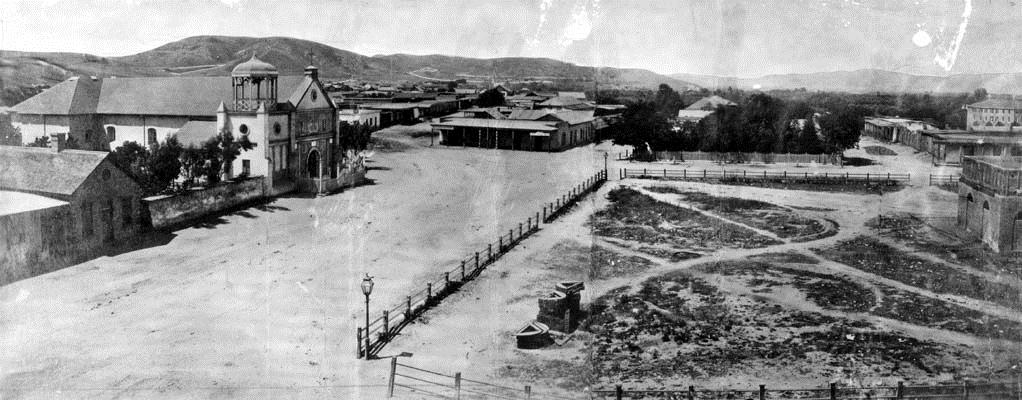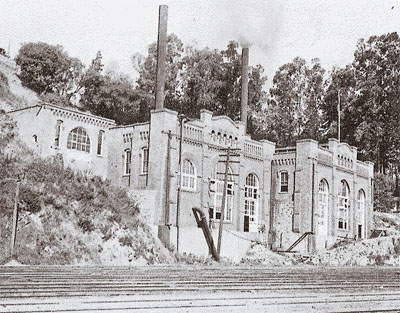Water in Early Los Angeles
History of Water in Early Los Angeles
The Spanish Pueblo de Los Angeles first relied on the Rio Porciuncual (Los angeles River) for it's water supply. The river water was channeled through a distribution system of crude dams, water wheels and ditches (or zanjas). Los Angeles was incorporated as a municipality on April 4, 1850 five months befoe California achieved statehood.** But, it wasn’t until 1860 that the City of Los Angeles’ Water Company completed its first water system. On Feb. 3, 1902, the city formally took ownership of the first Los Angeles municipal water works system.
The population of Los Angeles leaped from 5,728 in 1870 to 102,479 by 1900. Along with inherent growth problems, the city faced a serious water shortage. The new municipal Water Department, under the leadership of William Mulholland, its first superintendent and chief engineer, began enlarging the Los Angeles River system. Greater storage capacity was provided to conserve a large portion of the river's flow. Construction of new reservoirs and distribution mains provided added capacity and efficiency for the system. Conservation efforts were initiated at this early date with the installation of meters to discourage wasteful use of water.+
L.A.'s First Water Delivery System
.jpg) |
.jpg) |
|
Indian Water Carriers (1800)++ - A drawing of Indian water carriers in the early pueblo.
|
Early 1880's* - Drinking water was sold door-to-door by water vendors in the early days of the pueblo.
|
L.A.'s First Aqueduct System
Zanjas - Water was conveyed by zanjas (ditches) from the Los Angeles River to the community. The main zanja was referred to as the Zanja Madre or mother ditch.
Water Wheel - To move the water from the ditch to the reservoir in the Plaza in the center of the town, a water wheel was used.
 |
||
| Water Wheel on the Zanja Madre (1863)* - The water wheel took water from the Zanja Madre to the old brick reservoir that stood in the middle of what is now the Plaza at the end of Olvera Street. |
L.A.'s First Reservoir
.jpg) |
||
| Los Angeles Reservoir (ca. 1860)* - L. A.'s first water reservoir was the brick stucture shown in the center of the Plaza. The adobe directly behind was owned by Augustin Olvera. The 3-story building was the Sisters of Charity Hosipital. The reservoir was built in 1858. |
 |
||
| The Plaza and 'Old Plaza Church (Mission Nuestra Senora Reina de Los Angeles) in 1869*. The square main brick reservoir in the middle of the Plaza at the right was the terminius of the town's historic lifeline: The Zanja Madre. The building in the top right background was the Lugo House: first home to St. Vincent's College (now Loyola Marymount University).
|
Buena Vista Reservoir
.jpg) |
||
| Buena Vista Reservoir (1876)* - As the desire for more storage arose, and the wooden pipes were being replaced by miles of iron pipe, the Buena Vista Reservoir was created in 1868-9 using a small earthen dam and built at an elevation of 378 feet. It was built by privately owned L.A. Water Company and was its first storage facility. The photo shows the reservoir as seen from the hills, looking east from the present-day location of the Pasadena Freeway. |
.jpg) |
||
| Buena Vista Reservoir (1876)* - The photo above shows a bridge over the Buena Vista Reservoir in Elysian Park in 1876. |
Buena Vista Pumping Station
 |
||
| Buena Vista Pumping Station - built to move the water to Los Angeles consumers, but it became redundant after the Owens Valley Aqueduct (Los Angeles Aqueduct) was completed in 1913. |
Early Water Pipes
Hollowed logs provided a means to move water for the early water systems.
Wooden water pipes reinforced with metal cable around them served as the intitial water transportation system designed to bring water from the zanjas to homes and businesses.
Wood Pipes and Metal Connections
Where junctions and valves were needed iron couplings were used. The three and four inch pipes ultimately were replaced by iron pipes.
See The Zanjas and the Pioneer Water Systems for Los Angeles by Abraham Hoffman and Teena Stern. Southern California Quarterly 89 (Spring 2007)
References:
+ http://scripophily.net/deofwaandpoo.html
* Photo Source: DWP-LA Public Library Image Archive
++ Drawing by Orpha Klinker Carpenter and appeared in the book "The City That Grew" by Boyle Workman.
Menu
- Home
- Mission
- Museum
- Mulholland Service Award
- Major Efforts
- Board Officers and Directors
- Positions on Owens Valley and the City of Los Angeles Issues
- Legislative Positions on
Water Issues
- Legislative Positions on
Energy Issues
- Recent Newsletters
- Historical Op Ed Pieces
- Membership
- Contact Us
- Search Index